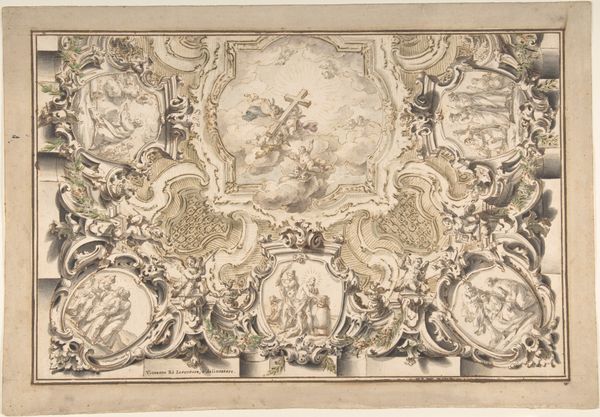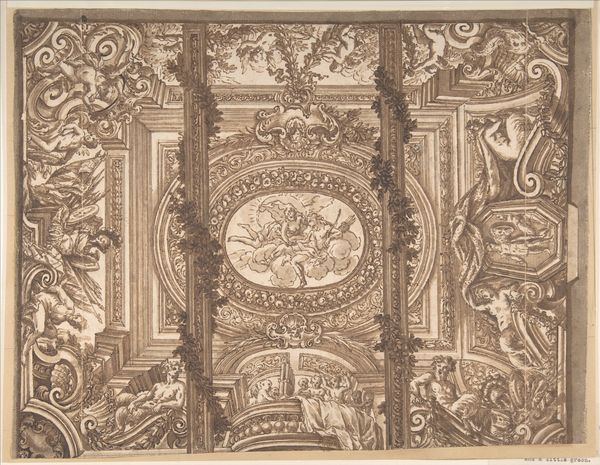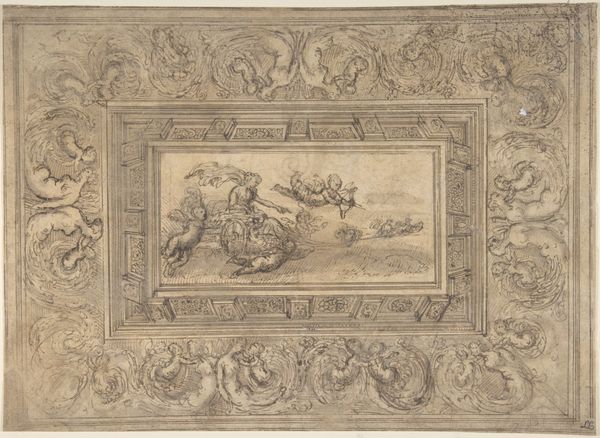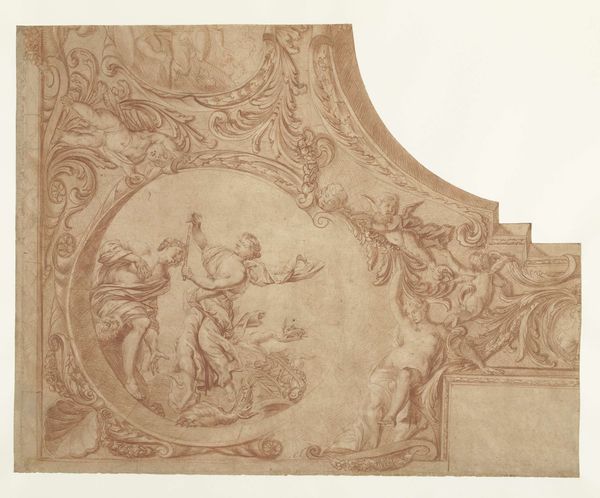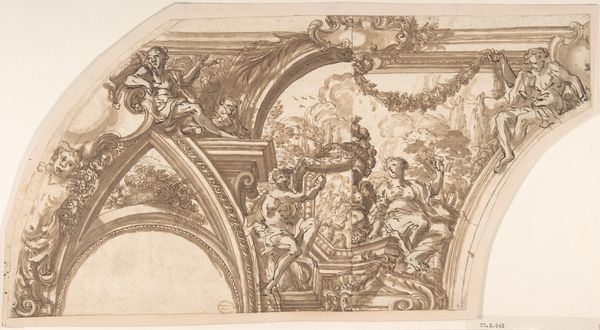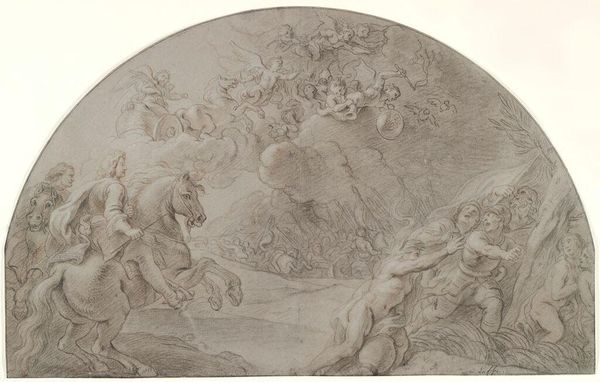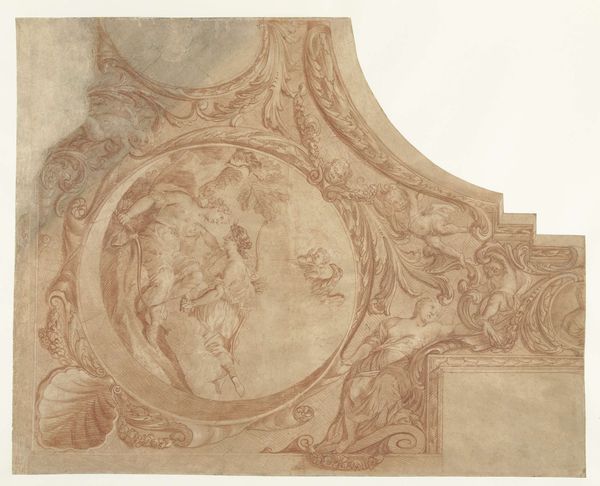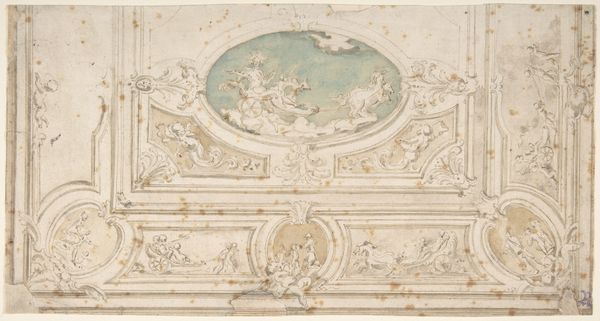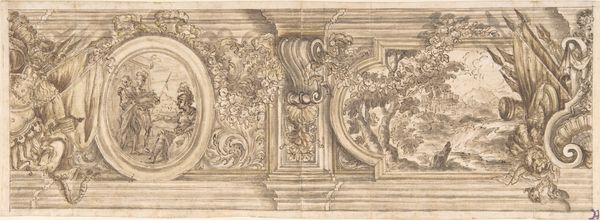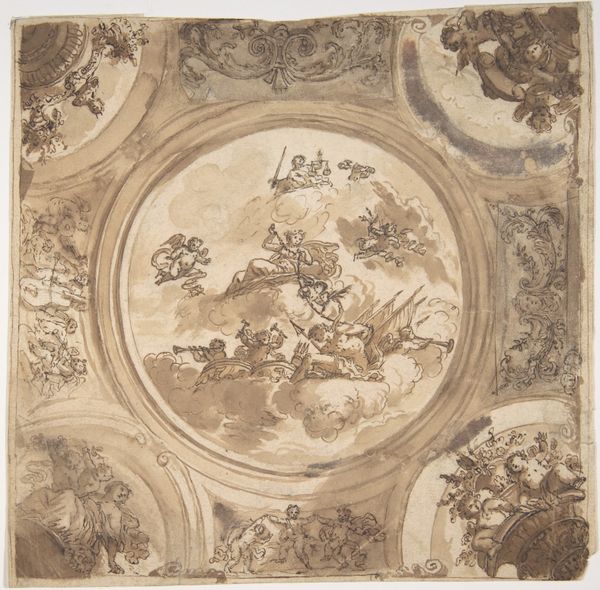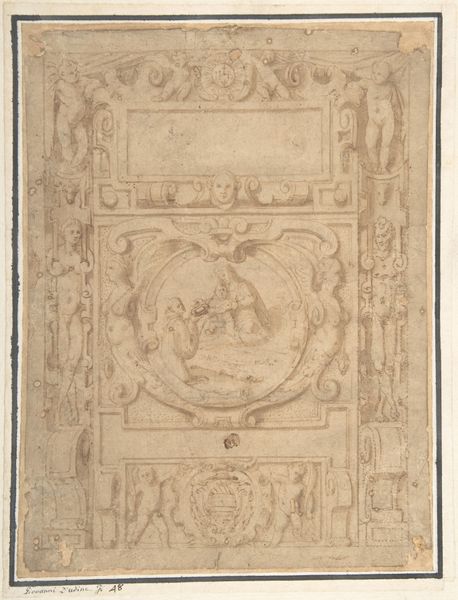
drawing, paper, watercolor, ink
#
drawing
#
allegory
#
baroque
#
figuration
#
paper
#
watercolor
#
ink
#
line
#
history-painting
#
pencil art
#
watercolor
Dimensions: height 229 mm, width 386 mm
Copyright: Rijks Museum: Open Domain
Curator: Here we have Mattheus Terwesten's "Ontwerp voor een plafondschildering met zijstukken," a design for a ceiling painting, currently held in the Rijksmuseum. Terwesten probably executed this work between 1680 and 1757 using ink, watercolor, and line on paper. What are your first thoughts? Editor: I'm getting a sense of lightness and almost Baroque drama, all rendered in gentle washes of brown. It feels like peering up into a sun-drenched daydream populated by angels and mythological figures. Curator: The Baroque is an important aspect to consider. Look at the exuberant curves of the framing elements, the swirling clouds, the dynamic poses of the figures. It all points to a desire to create a sense of awe and movement. What might these swirling figures symbolize for us today? Editor: To me, it's interesting how these allegorical figures almost form a system of cultural echoes. The artist borrows these classical symbols not as stagnant emblems, but as dynamic players performing on the ceiling’s stage. It almost feels playful, doesn't it? A game of visual tag across centuries. Curator: Yes, I see what you mean! And I agree about the playfulness. These cherubic figures appear carefree as they engage in what may be interpreted as an expression of heavenly merriment, emphasizing the freedom inherent in Baroque designs. They embody innocence. Editor: It definitely lightens the symbolic weight! It's like Terwesten’s telling us: even serious ideas can float on clouds. Makes me think, how much does the placement, specifically on a ceiling, inform its message? Does it change the way the art speaks to us? Curator: The ceiling placement invites a sense of aspiration. By looking up, the viewer symbolically elevates their perspective. Ceilings themselves often represented grandeur and authority, thereby making any work placed on a ceiling an effort in social and psychological impression. Editor: Interesting. So, this image—all cherubs, soft color washes, classical imagery—ends up reflecting power dynamics and maybe even aspiration toward them. And all along, I was just enjoying the lovely composition. Curator: The intersection between personal perception and objective fact is always one of art’s many fascinations. This piece really brings that idea to life. Editor: I couldn’t agree more! It certainly sends my mind spiraling upward!
Comments
No comments
Be the first to comment and join the conversation on the ultimate creative platform.
